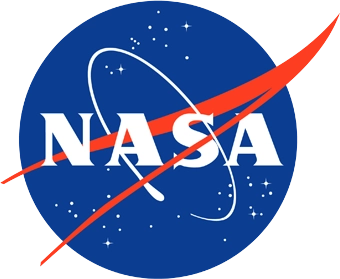I am currently working in the Gravitational Microlensing Center at NASA Goddard Space Flight Center since 2016. My research interests are gravitational microlensing, detection and characterization of wide orbit low mass exoplanet systems.
APARNA BHATTACHARYA
(Research Scientist)
| Email: | aparna.bhattacharya@nasa.gov |
| Org Code: | 667 |
| Address: |
NASA/GSFC Mail Code 667 Greenbelt, MD 20771 |
| Employer: | UNIV OF MARYLAND COLLEGE PARK |
Brief Bio
Positions/Employment
Postdoctoral Research Associate
NASA Goddard Space Flight Center - Maryland
May 2017 - Present
Assistant Research Scientist
NASA Goddard Space Flight Center - Maryland
July 2016 - April 2017
Education
2017, PhD, Physics, University of Notre Dame, USA
Thesis Title: "Development of Space Based Microlensing Exoplanet Mass Measurement Method".
2015, MS, Physics, University of Notre Dame, USA.
2011, BSc, Physics, Calcutta University, India.
Research Interests
Detecting Wide Orbit Low Mass Exoplanets with Microlensing
Astrophysics: Extrasolar planetsI study wide orbit low mass planets (like sub-Saturn or sub-Neptune analog) outside the solar system, i.e., extrasolar planets or exoplanets using microlensing method. When the light from a background source star is gravitationally lensed by a foreground lens star, the light of the source star gets magnified and follows a Paczinski light curve. If the lens star happens to host a planet, the source star light will be affected by the gravity of this planet resulting a planetary signature in the light curve. I work in collaboration with MOA (Microlensing Observation in Astrophysics) group - one of the leading microlensing exoplanet survey groups worldwide to model these light curves and discover the exoplanets. This includes observing project at Mt. John observatory in New Zealand and computational projects related to modelling the photometric time series data to detect and understand the exoplanetary system. This is the only method sensitive to the wide orbit low mass exoplanets. Since the detection of the planet is independent of the light from its host star, it opens up the possibility of detecting even free floating planets.
Characterizing Microlensing Exoplanets with High Resolution Images
Astrophysics: Extrasolar planetsThe discovery of microlensing exoplanets from ground based observations and light curve modelling provides us with planet-host mass ratio and an insight into the source star. It fails to provide us with the mass of the planet and its host star. I study the follow up high resolution images from HST and Keck AO of such microlensing planetary events to measure the masses of the planet and its host star. I use PSF fitting method on HST (high res) images to detect the lens (host -star) system when the lens and source are partially resolved and then I use the lens brightness information to characterize the exoplanetary system. We have published the first direct confirmation of a planetary microlensing signal. A unique detection of the lens is very important for the exact mass measurement and characterization. Contamination due to the companions and nearby stars can affect the measured brightness of the host star and consequently the mass measurements of the planetary system. My study includes modification of the PSF fitting method to account for such contamination effects due to stellar multiplicity and crowded photometry. This is going to be one of the primary methods of microlensing exoplanet mass measurement in WFIRST era.
WFIRST Microlensing Exoplanet Space Survey Mission
Astrophysics: Extrasolar planetsWFIRST (Wide Field Infra Red Survey Telescope) is NASA's top priority mission according to 2010 New Horizon Decadal Survey. This telescope is scheduled to launch in mid-2020s. One of the main missions of this telescope is to complete the exoplanet census with detecting wide orbit low mass cold exoplanets with a space based microlensing survey. WFIRST will complement the Kepler exoplanet study mission by providing detection and mass measurement of thousands of wide orbit (1-10 AU) exoplanets up to earth mass. This will detect saturn and neptune analog planets and show us how common or uncommon our solar system is. According to core accretion theory this region (beyond the snowline) is the birthplace of the planet formation. Also the popular belief is that the earth was too hot to hold liquid water during planet formation and the current liquid water actually migrated from the outer region. The exoplanet census and statistics from WFIRST will be able to provide insight into such questions regarding the planet population, architecture and demographics.
